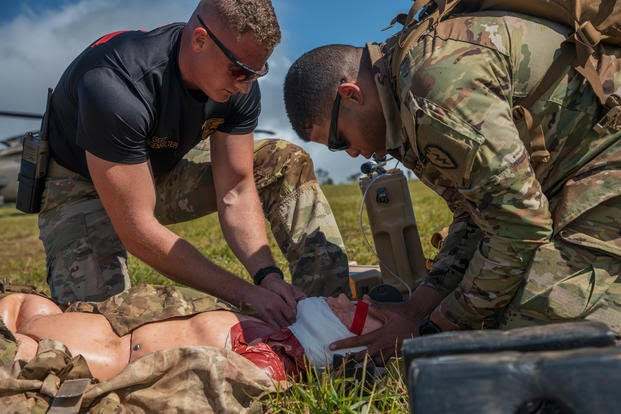Army Wants New Medical Gel that Seals Off Hemorrhaging Wounds on the Battlefield
2 min read
Army researchers are eyeing a promising new wound-care technology that could allow soldiers to seal hemorrhaging trauma wounds on parts of the body where pressure bandages can’t stop bleeding.
The Army Research Laboratory, or ARL, is providing technical oversight on a new hemostatic gel, known as StatBond, that stops uncontrolled bleeding in noncompressible areas of the body such as the groin, armpit, neck and internal organs.
“This technology provides a new capability to stop bleeding under austere conditions,” Robert Mantz, a chemistry branch chief with ARL, which is an element of Army Combat Capabilities Development Command, said in a service news release.
If all goes well, StatBond will be in soldiers’ hands beginning in 2025, according to the release.
It is currently undergoing Food and Drug Administration approval and will likely be packaged into a durable squeeze pack soldiers can carry in their pockets, according to the release.
A research and development firm known as Hybrid Plastics, along with the University of Mississippi Medical Center, Vanderbilt University and Ichor Sciences, developed StatBond through an effort funded by the Defense Health Agency Small Business Innovation Research program.
“The breakthrough nature of the [technology] lies in the ability of the hemostatic gel to flow deeply into penetrating wounds, and immediately seal against fluid loss, thereby allowing the natural blood clotting cascade to happen against the surface of the gel,” Joe Lichtenhan, vice president of technology at Hybrid Plastics, said in the release.
In the past, the Army has issued fast-acting clotting agents such as QuickClot that have “limited efficacy with arterial bleeds,” Mantz told Military.com in a statement.
StatBond contains Polyhedral Oligomeric Silsesquioxane, or POSS, a silicon-based material that allows the treatment to be injected into the wound and “it does not burn,” Mantz said in the statement.
“Additionally, so far the research shows that the POSS material doesn’t cause any cell death or any toxicity to the body,” he said in the statement. “The treatment can be left in the body and is naturally flushed out over time.”
StatBond also can be used to treat lung punctures, eye injuries and burn wounds and to prevent infection, according to the release. While bleeding is not always associated with these types of injuries, StatBond seals the damaged tissue against further fluid loss while retaining oxygen transport to the injury, which helps preserve tissue and supports the natural healing process and tissue regeneration, it adds.
The research team is working with the Army to further mature the technology.
“We are committed to bringing advanced medical technology and devices to the wounded warfighter,” Lichtenhan said in the release. “We anticipate the technology will become available for use by physicians in 2022 and potentially carried by soldiers by 2025.”





